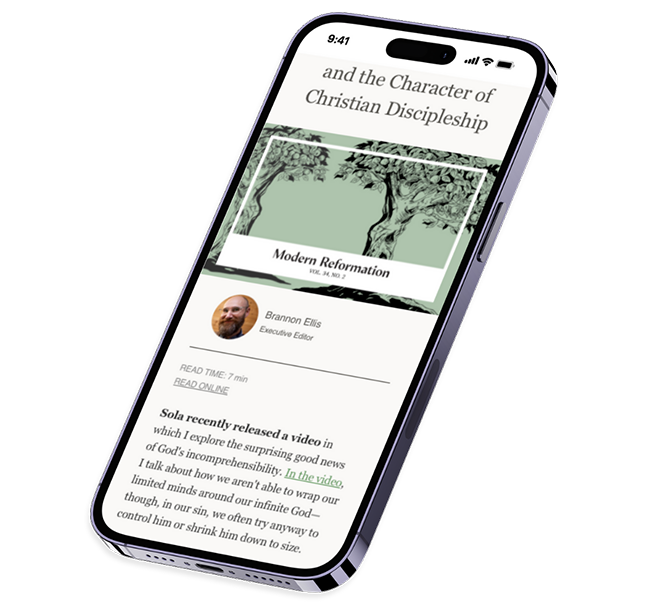It was 1,700 years ago this summer that the first ecumenical council of the Christian church was called to the city of Nicaea in Asia Minor (modern-day Turkey) to confer about a Christological crisis that had arisen around the area of Alexandria in Egypt, due to the teachings of a presbyter by the name Arius. Popular fictional claims—such as the council’s razor thin margin of voting or its role in selecting the canon of the New Testament—remain purely false. The church fathers voted nearly unanimously regarding the deity of Christ. The canon of the New Testament would not be compiled in the order that modern audiences are familiar with until Athanasius’ Easter letter in 367. Today, the Nicene Creed stands as the widest accepted creed among Catholics, Orthodox, and Protestants. To step outside of the claims of the creed is to step outside of the boundaries of orthodoxy. The creed’s clarity has safely guarded orthodoxy for 1,700 years and still guides the church today.
Calling Council
Arius, the problematic presbyter, had put his teachings out there for the world to hear, and the response was heated. The church—legally protected at this time by the newly enthroned Emperor Constantine—was afforded the opportunity to meet and settle theological issues together. The council was called by Constantine as he sought to bring unity to the church and thus the empire at large. Dangerous teachings had arisen in Alexandria due to Arius, and Constantine, the master politician, wanted to calm the passion of the church. So, in the summer of 325, over 300 bishops gathered to answer the church’s most pressing questions. Arius had set the task for them as they faced the very question that Christ put to Peter in Matthew 16, “But who do you say that I am?”
Answering questions about Christ’s very being and nature was crucial to the church, since they had far reaching implications for practices such as the sacrament of Communion instituted by Jesus, himself, at Passover (Matt. 26:26–29), and the doctrine of atonement and how Christ justified the church by his death and resurrection. Early in the controversy, Arius wrote to his own bishop, Alexander of Alexandria, “For he [the Son] is not everlasting or co-everlasting or unbegotten with the Father. Nor does he have being with the Father, as certain individuals mention things relatively and bring into the discussion two unbegotten causes.” In clear language to his very own bishop, Arius had attacked not only the Trinity but the very person and nature of Jesus Christ. Alexander excommunicated Arius shortly after this letter. Arius appealed to the wider church throughout the Empire concerning his position on the person and nature of Jesus. Defending himself to Eusebius of Nicomedia, Arius remarked, “But we are persecuted because we say, ‘The Son has a beginning, but God is without beginning.’” A clear and emphatic denial of the divinity of Jesus may be found throughout his letters. When describing Jesus, Arius employed creaturely language allowing an unorthodox distinction in the conversation. For to claim that the Father and Son were of the same substance/being was to not give God the Father his proper due; thus, the Creator/creature distinction was important for Arius. His teachings aimed to steer the church back to the unity of God as being one (Deut. 6:4). It was imperative that honor be given to Jesus as he was a creature above all others, but it bothered Arius that the church gave any sort of worship to someone made by God. Arius’ teaching spread across the Mediterranean world as did his appeal for support. Yet, many saw his teachings as the bridge too far and a serious denial of the Christian faith. Constantine’s call brought the church’s bishops together to flesh out what it meant that Jesus was the Son of God.
Answering the Christological Crisis
At Nicaea under the eye of Emperor Constantine, the bishops gathered, argued, and concluded that the teachings of Arius were outside of Scripture and orthodoxy; their response included a creedal statement, now known as the Nicene Creed, confirming the church’s beliefs about Christ. To be outside of the creed was to be outside of the church. The creed confirmed both the divinity of Christ and his fullness of humanity taken on at the Incarnation before briefly looking at his life, death, and resurrection. Between the opening statements about God the Father and before the brief synopsis of Christ’s life and death, there is a Christological section of the creed that deals directly with the Arian controversy. The church declared that Jesus Christ was the “only Son of God, begotten from the Father before all ages.” While the language connects the Son’s origin to that of the Father, it is a relationship that is beyond the earthly father-son relationship. To protect the church against the claims of Arius, the creed continues with the line, “true God from true God.” Jesus as the Son of God was of no lesser essence for the church but shared in the very essence of God the Father.
The creed’s declaration of “begotten not made” was a direct address to Arius as he used “begotten” interchangeably with such words as: “created, defined, or established.” There was no room for such language as the church met in Nicaea. The term “created” was reserved for creation, but Christ was above all things, and thus nothing like creation. The church was adamant that Scripture declares that there was no forming or creating of the Son. Before all things, Jesus existed in the same fullness and being with his Father. While there is a clear distinction between the Creator and creation, the creed is an emphatic denial of Arius’ claims that Jesus was created and lower than God.
While there is distinction between the Father and the Son, there is no separation, as the bishops declared that Jesus Christ is “Light from light.” This beautiful analogy of light notes the mystery revealed in the Incarnation, for indeed how could anyone separate light from itself? There is no separation of being between God the Father and God the Son; they are of the same substance. Further Trinitarian doctrine will declare that there are three distinct persons within the Godhead, but all three persons, Father, Son, and Spirit, are of the same essence (or substance). Hence, the declaration that God is three in one, and one in three.
Continuing the Nicene Creed
The church of the early fourth century faced a problem that didn’t go away after the death of Arius. Herman Bavinck notes in Reformed Dogmatics that the doctrine of the Trinity fell to “Athanasius, the three Cappadocians, and Augustine.” In fact, despite the condemnation of Arianism at the council of Nicaea, the heretical doctrine not only remained a fixture within the empire’s boundaries and beyond, but it also gained ground in the church.
The council was an emphatic declaration on church doctrine, yet the struggle against Arianism continued. After the council, Athanasius replaced his mentor, Alexander, as the bishop of Alexandria. He picked up the fight against the teachings of Arius, leading the church to protect orthodoxy. Athanasius was exiled over five times each due to his steadfast declarations against the heresy of Arianism. The well-known mantra, “Athanasius contra mundum,” (Athanasius against the world), captures the battle over Arianism and the heresy’s hold on many in the church during the fourth century.
The Cappadocian Fathers, Basil of Caesarea, Gregory of Nazianzus, and Gregory of Nyssa were each crucial in the development of the church’s Trinitarian doctrine. Basil wrote on the divinity of the Holy Spirit, which greatly influenced the Council of Constantinople (381) to revise the Nicene Creed, elaborating more on the Holy Spirit. Gregory of Nazianzus argued for the foundational framework of the creed in our limited understanding of the perfect eternal relationship of the Trinity, as the Son was begotten of the Father, and as the Spirit proceeds from the Father (John 1:14, 18 and 15:26). Gregory of Nyssa was a key figure at the Council of Constantinople in 381 arguing for the simplicity of God (that God is indivisible—not separate parts) and the three persons in one. Defining the doctrine of the Trinity was an absolute first-rate ordeal and deserved the church’s highest attention. Augustine of Hippo continued to strengthen the doctrine of the Trinity in its unity and distinctions in On the Trinity. Others like Leo the Great aided the church in further councils of Ephesus and Chalcedon concerning the person and nature of Christ. Today, there are still groups that deny the divinity of Christ and stand outside of orthodoxy. Nicene theology is not a creation of the church, but a movement and development of God’s favor to protect and state clearly the truths revealed in Scripture as declared by Jesus Christ.
Reflecting 1700 Years Later
The Nicene Creed was and is a gracious gift from God that provided the church then and now with a collective confirmation that “the Word became flesh and dwelt among us” (John 1:14). Jaroslav Pelikan notes that the faith confessed at Nicaea was a “cosmological confession and a soteriological confession” for “it was the conviction that only he who had created the universe could save man, and that to do either or both of these he himself had to be divine and not a creature.” What was argued and agreed upon at Nicaea set the church’s very understanding of the universe and God’s very nature. Redemption of the world and God’s people was secured by the arrival of God in space and time in the second person of the Godhead. The proclamation of Christ as both God and man is the essence of the gospel, for Christ, the second and better Adam, followed the law perfectly, allowing his true innocence in death to redeem and restore his people (Rom. 5:12–21).
The creed is declarative and reflective in nature. Its near universal acceptance across the major traditions of the church both in the East and West speaks to its ability to set forth concisely and clearly the truths of the church at its very foundation: Christ, both God and man. It protects the divinity of Christ as well as his Incarnation; Christmas and Easter find their narratives remembered and proclaimed in the great creed. God the Son came down in the flesh, lived an obedient life unto the Father, died to set the captives free, and will come one day to judge the living and the dead. As God is not the author of confusion, he continues to guide his church in clarity (1 Cor. 14:33).
The council that met 1,700 years ago in the city of Nicaea did not gather simply to expound upon an intellectual and philosophical discourse but instead weighed the very essence of the Christian faith. Its teachings and confessions are the heart of Christianity and the gospel. It has directed the church’s worship and liturgies; it has offered counsel and guidance to the church’s laity as well as its theologians. It has steered the church through troubled waters and leaves the church with a sure and mighty reminder of the truths declared and secured. It is both an individual proclamation as well as a communal declaration of belief and hope. The church together has proclaimed aloud this beautiful declaration for 1700 years and shall need its guidance until the Lord’s return.
Footnotes
William G. Rusch, trans, The Trinitarian Controversy (Minneapolis, MN: Fortress Press, 1980), 25.
BackWilliam G. Rusch, trans, The Trinitarian Controversy (Minneapolis, MN: Fortress Press, 1980), 23–24.
BackHerman Bavinck, Prolegomena, vol 1 of Reformed Dogmatics, ed. John Bolt, trans. John Vriend (Grand Rapids: Baker Academic, 2003), 257.
BackJaroslav Pelikan, The Emergence of the Catholic Tradition (100–600), vol 1 of The Christian Tradition: A History of the Development of Doctrine (Chicago: University of Chicago Press, 1971), 203.
Back






